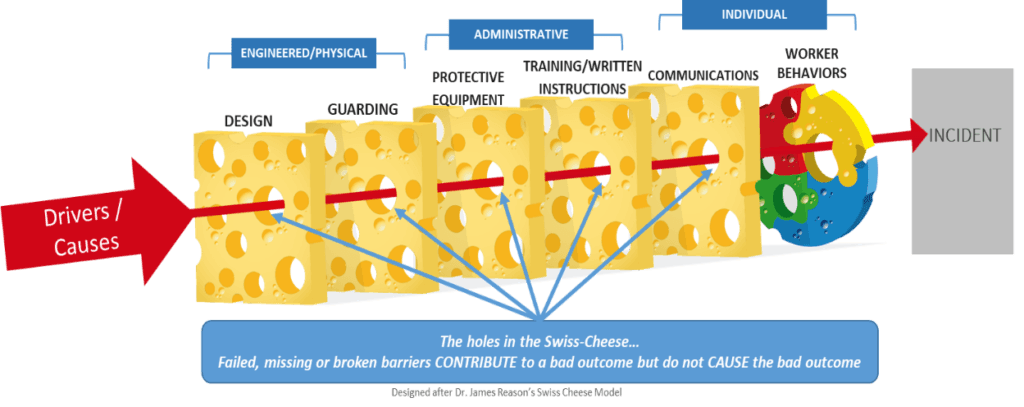When problems or adverse consequences occur, organizations tend to immediately start ‘investigating’ so that they can create actions to fix the problem and prevent future occurrences. There is a simple method or approach to problem-solving and incident analysis that applies whether the problem is big or small. This approach is called the 5Cs. The 5Cs are Conditions, Correlations, Contributions, Causes, and Corrections. Listed below is the detail and order in which they should be considered.
#1 – Conditions: Identify the physical characteristics of the failure including work environment, equipment failure, and task demands. Conditions can be defined as “attendant circumstances, a state of being, or something essential to the appearance or occurrence of something else.”1
#2 – Correlations: Information gathered from interviews and workplace visits should be used to determine if the issues discovered are correlated, or if they “have a mutual relationship or connection, in which one thing affects or depends on another.”2 Determining if things are correlated or connected filters out the things that could not be causal, thereby trimming the things to be considered later in the analysis.
#3 – Contributors: These items may be correlated and have contributed to the outcome but may not have caused the outcome. Contributors don’t MAKE things happen, they either (a) let something happen (i.e. failed to stop an incident that it should have); (b) let the incident go on longer than it should have; or (c) failed to mitigate the consequences and made the outcome worse than it should have been. Example: If a car goes off the road and breaks through the guardrail (an engineered component of the Swiss Cheese Model)4, the guardrail breaking did not cause the bad outcome, but it contributed to the extent of the damage of the vehicle.
#4 – Causes: These are the things that MAKE things happen or DRIVE an incident to occur. They are the things that, if corrected or fixed, should reduce the probability that the incident will happen again. Dictionary.com defines a cause as “a person or thing that acts, happens, or exists in such a way that some specific thing happens as a result; the producer of an effect.”3 Most incidents contain more than one cause or driver of the incident. Correction of causes is paramount to preventing future bad outcomes.
#5 – Corrections: There are three types of actions to be considered as ‘corrective’. First, there are actions taken before the causes are identified or between the time that the problem is identified and the corrective actions can be taken – interim actions. Next, there are actions that restore systems to an acceptable pre-determined condition – restorative actions. And third, there are actions that actually fix the problem identified and its contributors – corrective actions. Tie corrective actions FIRST to causes, then to contributors. Doing them in this order usually reduces the total number of actions needed to fix or correct a problem.
Identifying and addressing the 5Cs, in order, will help organizations more clearly describe and be more effective at solving and correcting problems. Adding this to an organization’s problem solving and/or incident analysis process significantly improves the probability that you solve problems the first time, with the most effective actions.
References:
- Miriam-Webster Dictionary – Condition
- Oxford University Press – Correlate
- Dictionary.com – Cause
- Reason, J., 1995, Managing the Risks of Organizational Accidents, Cambridge University Press, Cambridge, UK
- Major Incident Analysis Workshop, Fisher Improvement Technologies, 2018

